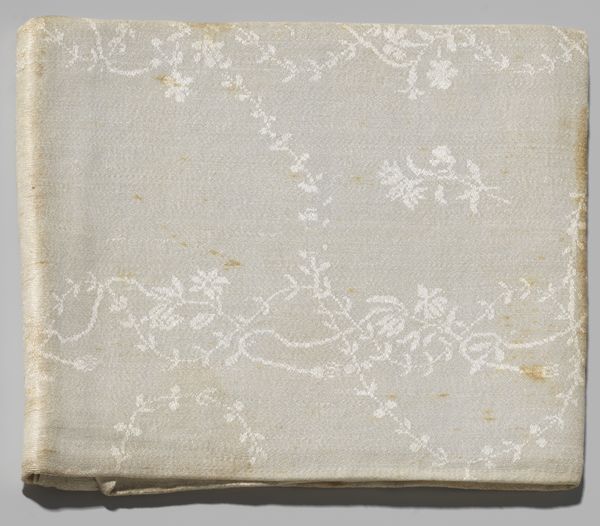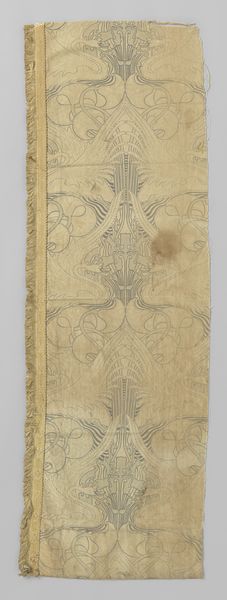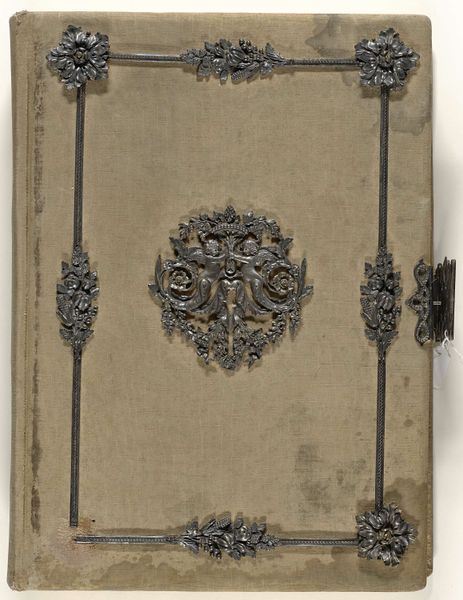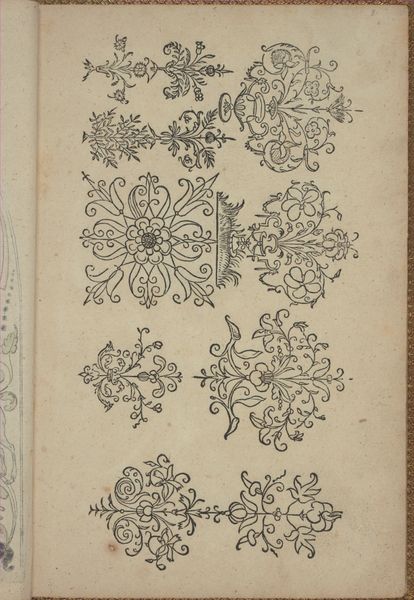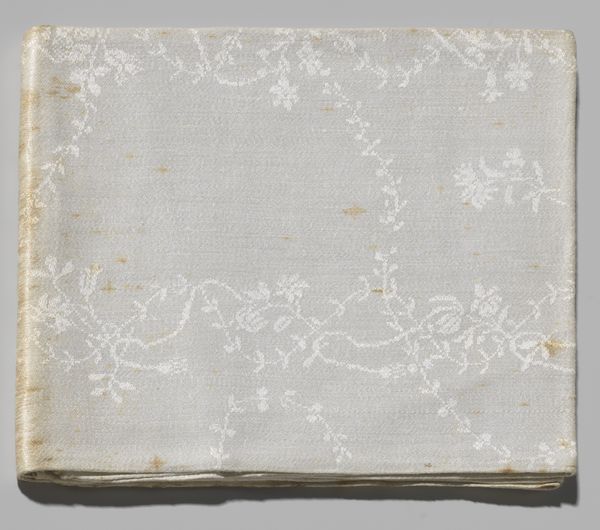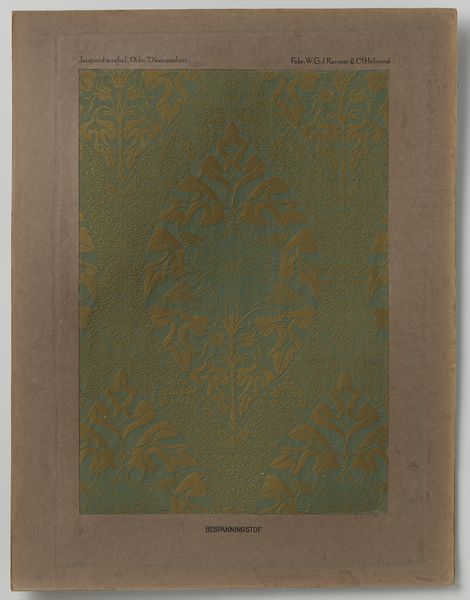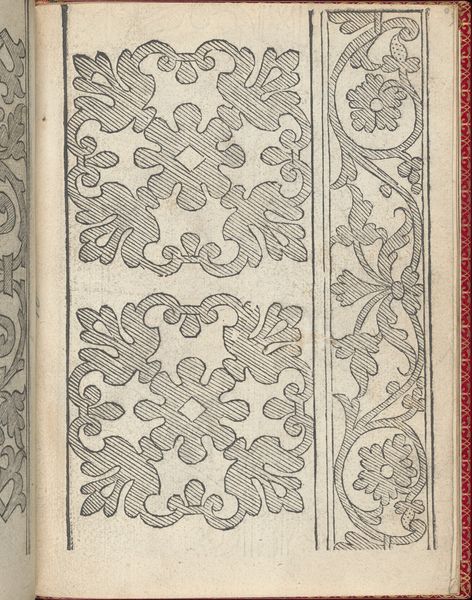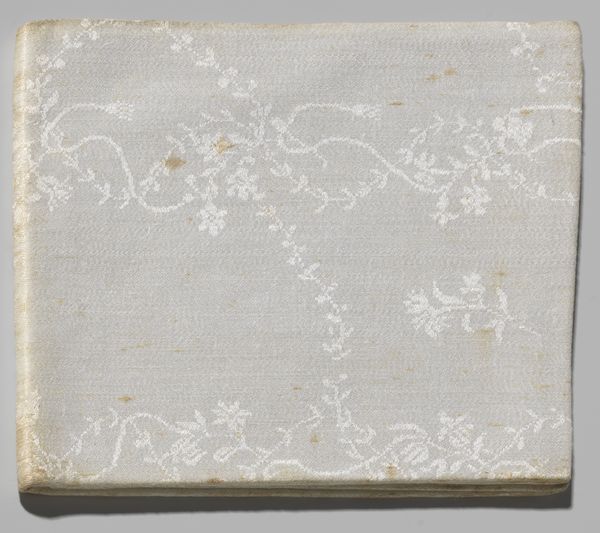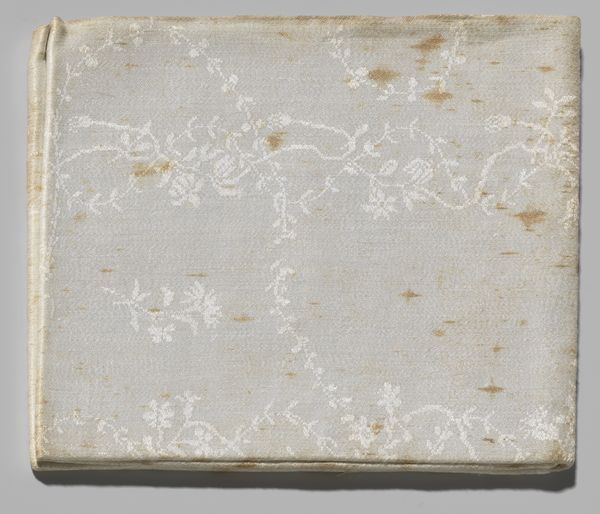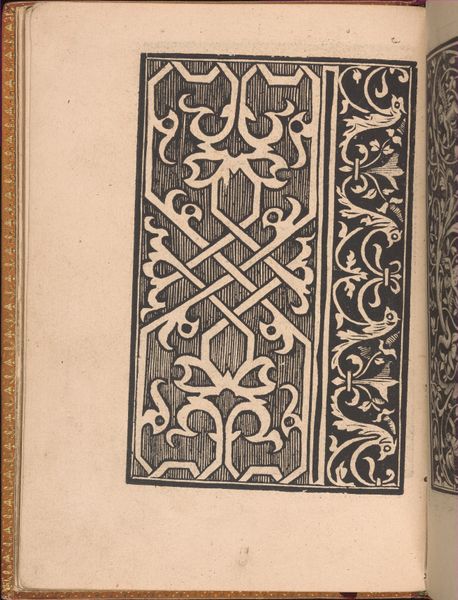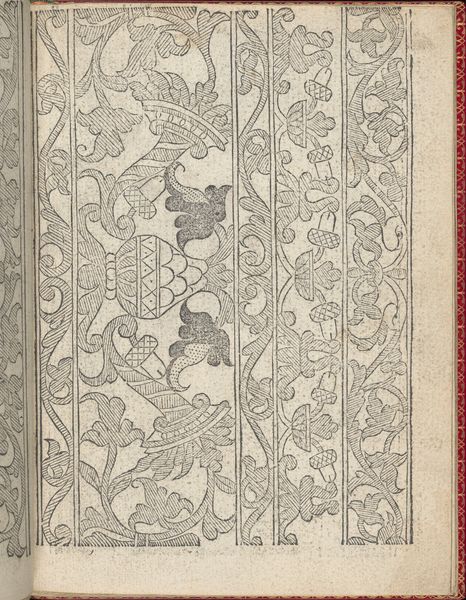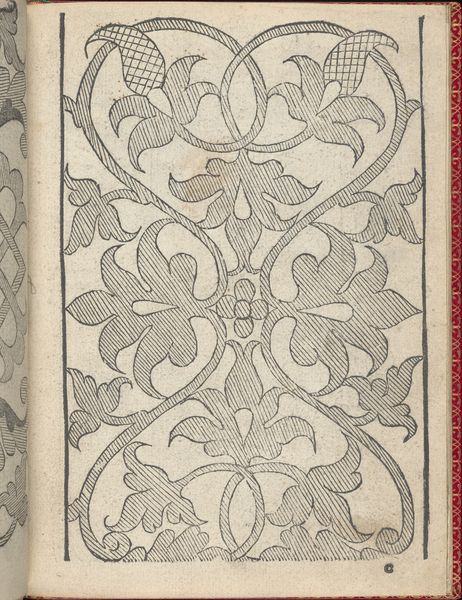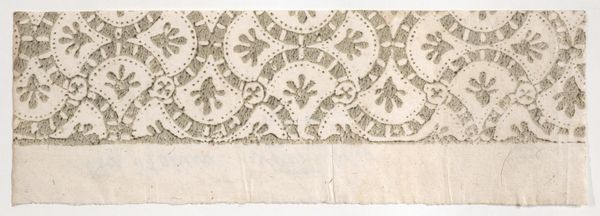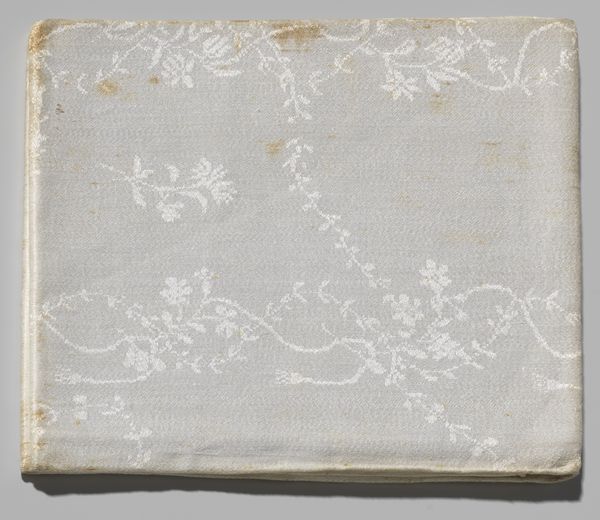
Dimensions: height 36 cm, width 51 cm, depth 4.5 cm
Copyright: Rijks Museum: Open Domain
Curator: What strikes me immediately is the delicate interplay between light and shadow across this relief. Editor: Indeed. We’re looking at “Rozet van gips, op paneel van hout” or "Rose of plaster, on wood panel," made around 1790, currently housed at the Rijksmuseum and attributed to Abraham van der Hart. The plasterwork set against the aged wooden panel evokes a striking juxtaposition. Curator: Absolutely. The rose motif, rigidly symmetrical, offers an excellent case study in Baroque ornamental design. Observe the cascading foliage, each leaf meticulously carved to project depth and movement. Semiotically, the rose itself implies notions of beauty, and the symmetrical balance suggests harmony and order, principles so cherished within Baroque aesthetics. Editor: I find the materiality more compelling. Plaster, a relatively inexpensive material, is crafted here to mimic far grander stonework. This piece prompts me to consider the artisanal skill needed to achieve such detail. The layered plaster, its texture built up through careful applications, hints at countless hours of repetitive, skilled labour. And how does its display impact perceptions of labor within high art? Curator: I understand your perspective, however, I must point out the careful attention to the rosette at the center, the clear focal point. Notice the spiraling form. It subtly suggests dynamic expansion even within the constraints of its two-dimensionality. This careful orchestration of forms, light, and space generates visual complexity that enriches its inherent meaning. Editor: It is precisely in its two-dimensionality—the way the panel’s plainness becomes the backdrop—that holds my attention. How might it have functioned within a larger interior scheme? Was it intended to emulate carved stone and elevate interiors for the rising Dutch middle class in contrast to more labor-intensive decoration work reserved for the aristocracy? This tension, this deliberate crafting to give the illusion, reflects larger social dynamics, doesn’t it? Curator: Perhaps. Yet, the craftsmanship elevates it beyond mere imitation. The interplay between convex and concave surfaces results in captivating effects. Editor: Indeed, contemplating the hands that molded this offers an unexpected glimpse into late 18th-century labor and interior sensibilities. Curator: It's been insightful viewing this intricate decorative artwork today, examining its symmetry and artistic forms. Editor: I've enjoyed it also; exploring its materials reminds us that there are hands and voices behind these forms of expressions.
Comments
No comments
Be the first to comment and join the conversation on the ultimate creative platform.
